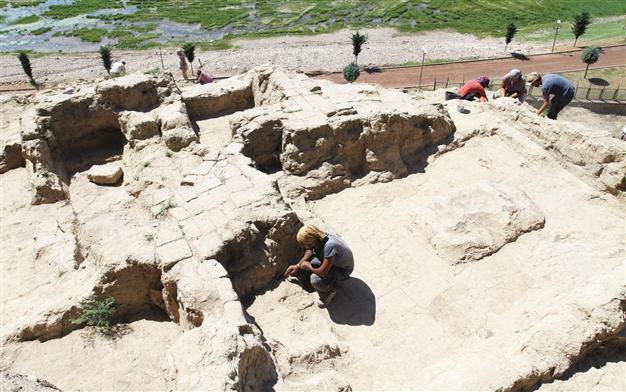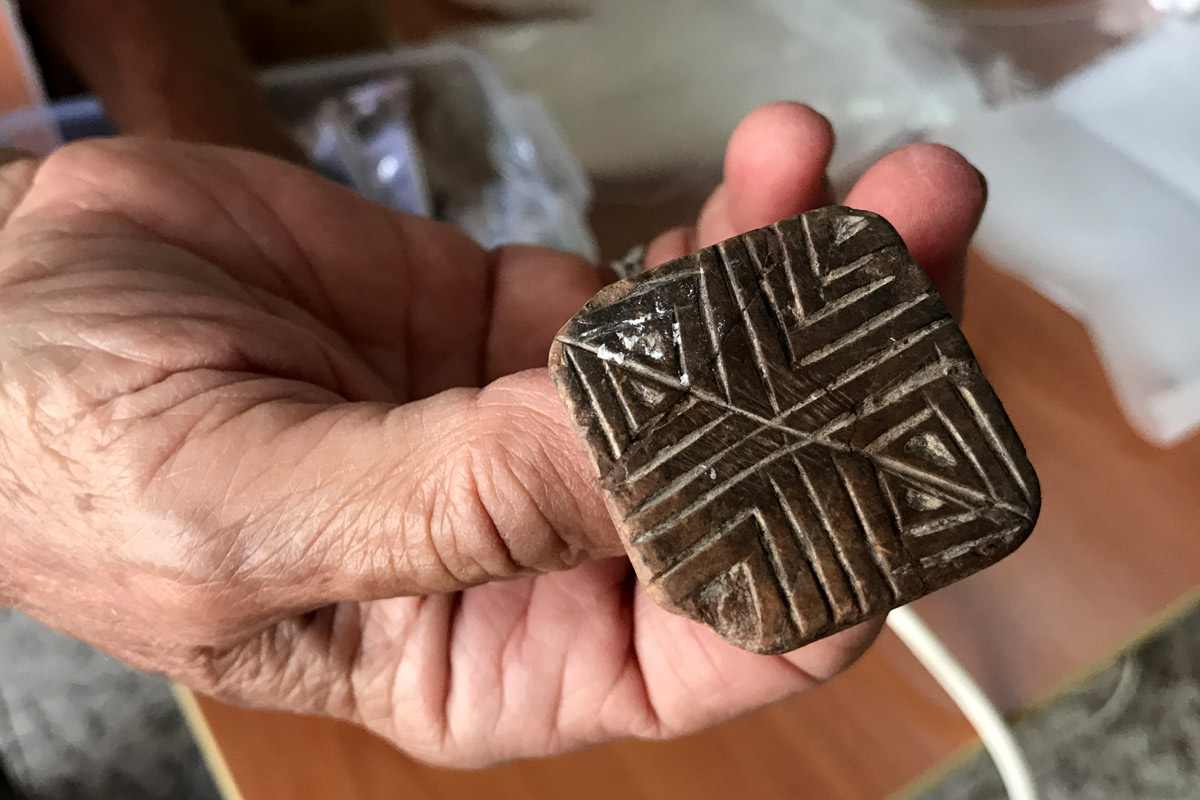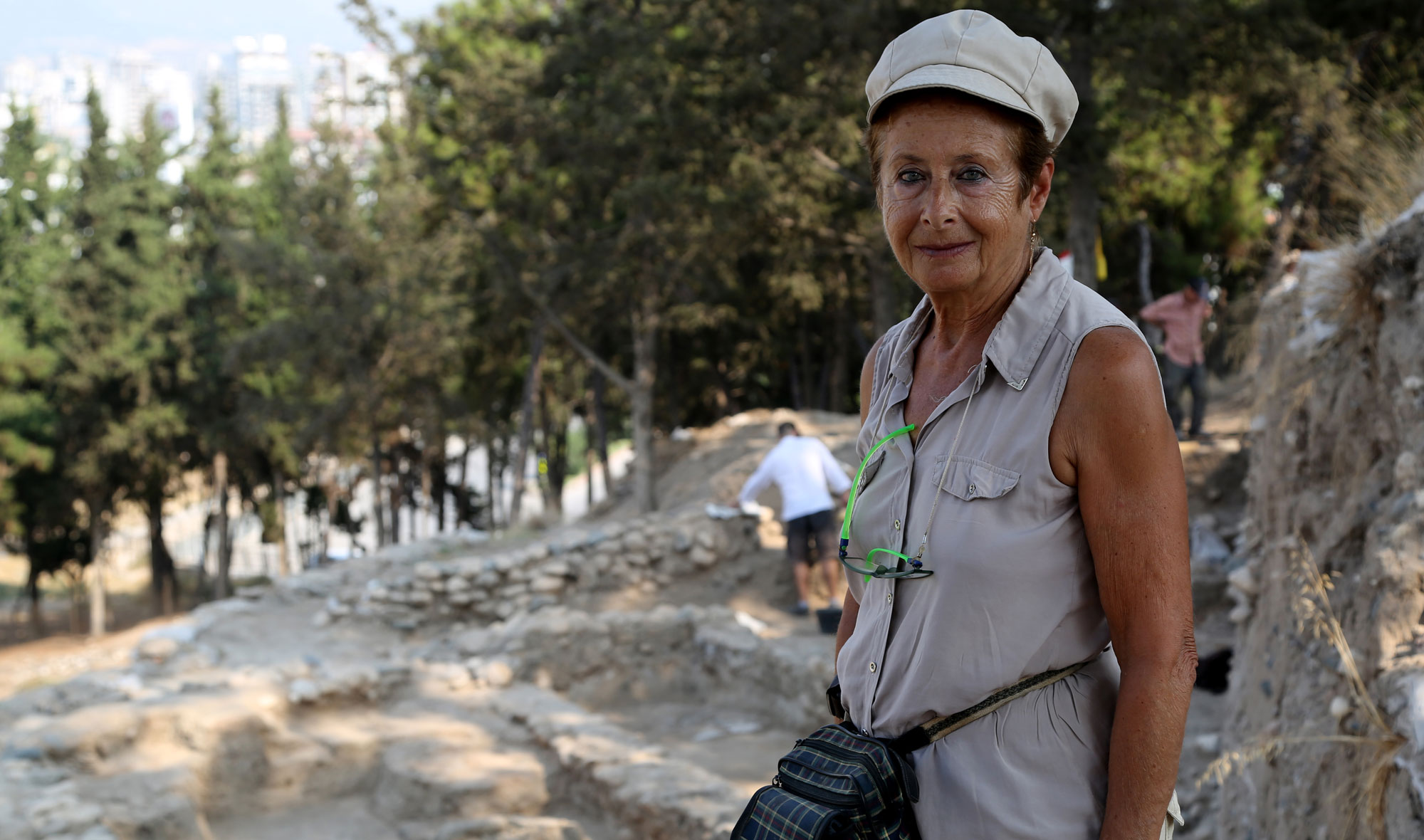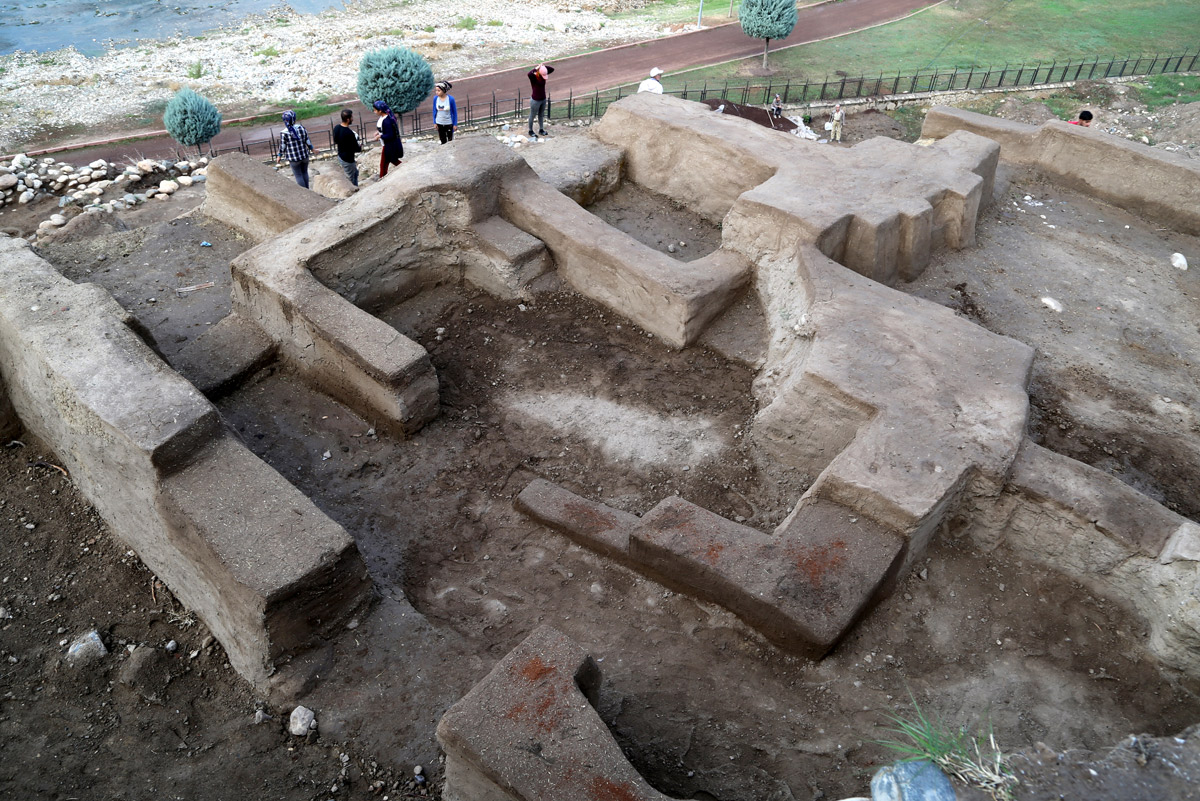Anthropology
Related: About this forum7,000-year-old fortress wall uncovered in southern Turkey
DAILY SABAH
ISTANBUL
Published
24.10.2019
19:36

IHA Photo
A fortress wall dating 7,000 years back to the Chalcolithic Age has been unearthed at the Yumuktepe Mound in southern Turkey's Mersin province.
The Yumuktepe Mound is highly significant as a continuous settlement for 9,000 years since the Neolithic Age.
Two and a half months of excavations at the mound are coming to an end on Friday. This year's excavations, focused on the Neolithic and Chalcolithic periods, were carried out by a 30-person team led by Isabella Caneva – a professor of archeology at the University of Salento in Lecce, Italy.
Caneva said that the 7-meter fortress wall discovered this season can now be shown to the public.
While every year's excavations have provided historical insights, this year's dig produced especially "striking" Neolithic and Chalcolithic findings, Caneva said.
Caneva said the layer in Yumuktepe Mound is special in that it contains very special architecture.
The fortress wall was made with a variety of materials, including a 1.5-meter-thick support wall made of limestone at the bottom, 2 meters of well-cut stones and 3 meters of mudbrick.
More:
https://www.dailysabah.com/history/2019/10/24/7000-year-old-fortress-wall-uncovered-in-southern-turkey
OAITW r.2.0
(28,392 posts)I wonder how the creationists can explain this?
SCantiGOP
(14,247 posts)Adam and Eve’s grandchildren built it.
Judi Lynn
(162,385 posts)September 11 2014 18:00:00
MERSİN - Anadolu Agency

The remains of the ancient palace in Yumuktepe tumulus show that it dates to as far back as 4,500 BC. AA photo
Ongoing archaeological excavations in one of the world’s oldest settlements, the Yumuktepe tumulus in the southern province of Mersin, have unearthed the remains of a palace. The palace dates to as far back as 4,500 B.C., and the quality of the pavement outside the palace was a big surprise for archaeologists.
Traces of settlements at Yumuktepe date back to 7,000 B.C. and settlements continued there until the 13th century. The excavation works in Yumuktepe are currently headed by Professor Isabella Caneva, from the Archeology Department in Italy’s Lecce University.
Caneva said this year’s works started one month ago and focused on the layers of the chalcolithic era in 5,000 B.C, yielding good results so far.
The remains of the palace were discovered during works in previous years, she added.
“This year’s work completely revealed the outline of the palace. We call it palace because it is a big building. It is from 4,500 B.C., the late chalcolithic era. At these times, normal houses were very small but there is a very big hall here. Each room was also floored with adobe. There were nearly 200 cups and ceramics, which means the meal was cooked for many people here. People who lived here were not a normal family but a large or elite family,” Caneva said.
More:
http://www.hurriyetdailynews.com/palace-unearthed-in-mersins-ancient-settlement-yumuktepe--71594
~ ~ ~
Wikipedia:
Yumuktepe (or Yümüktepe) is a tell (ruin mound) at 36°48′5″N 34°36′14″E within the city borders of Mersin, Turkey. In 1936, the mound was on the outskirts of Mersin, but after a rapid increase of population, the mound was surrounded by the Toroslar municipality of Mersin.
More:
https://en.wikipedia.org/wiki/Yumuktepe
~ ~ ~

Nine thousand years old seal unearthed in Turkish city of Mersin
25 EKİM 2018 00:06
The seal - dating back to 7,000 BC - was uncovered in excavations at Yumuktepe Höyük, located four kilometers west of the city center.
9,000 Years old seal unearthed in southern Turkey
An ancient seal dating back to some 9,000 years ago was unearthed at a mound in the southern coastal Turkish city of Mersin.
The seal - dating back to 7,000 BC - was uncovered in excavations at Yumuktepe Höyük, located four kilometers west of the city center.

During the two-and-a-half month excavations in the mound, the team of 25 - led by Isabella Caneva, an archaeology professor at Italy's Lecce University - discovered an arrowhead belonging the Neotlithic era and scores of sling stones in addition to the seal.

. . .
https://www.arkeolojikhaber.com/haber-nine-thousand-years-old-seal-unearthed-in-turkish-city-of-mersin-17744/
Judi Lynn
(162,385 posts)Yumuktepe is a tell or ruin mound right in the thriving city of Mersin in Southern Turkey. It raised itself by continued settlements since 7000 BC until the Middle Ages. Yumuktepe was close to the coast when the first people settled there. Now it is about a mile inland.
Yumuktepe thus is far younger than the other old settlements covered in this module (look a the time line to get an idea). Its present claim to fame is that so far it yielded the oldest smelted copper known to archeometallurgists.
I visited Yumuktepe in Sept. 2013. While I can't give you a picture of the "oldest smelted copper", I can give you a vague idea of what "finding" up to 9000 year old things actually entails: long and hard physical work after a long and dedicated study of the scientific background.

More:
https://www.tf.uni-kiel.de/matwis/amat/iss/kap_a/advanced/ta_1_2j.html